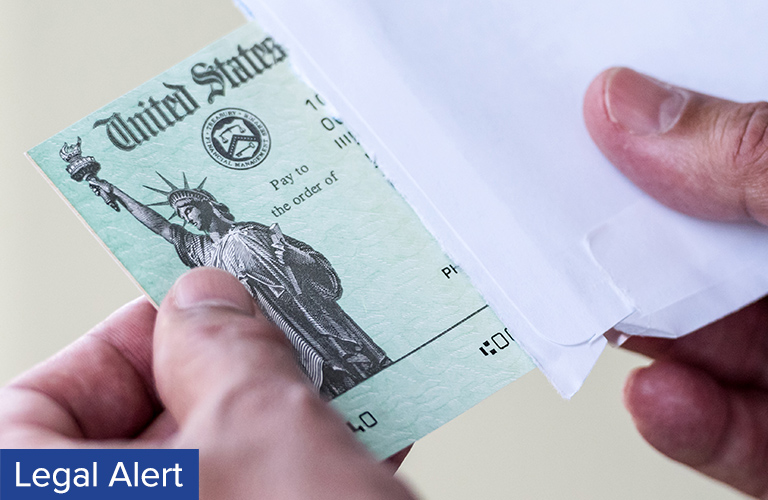
On March 13, 2020, President Trump declared a national emergency in connection with the coronavirus disease. The specific nature of this declaration triggered the provisions of Section 139 of the Internal Revenue Code, which provides preferential tax treatment of certain types of relief payments. This SGR Tax Blog posting will outline the applicable rules for such payments, in three specific scenarios:
- payments to employees
- payments to employees from captive or controlled charitable organizations
- payments from third-party charitable organizations
Relief Payments to Employees
While Section 139 applies to a variety of relief, the most likely payments that employers may be interested in providing to employees would include payments to reimburse or pay reasonable and necessary medical, personal, family, living, or funeral expenses incurred as a result of the disease or the quarantine.
Note that a payment under Section 139 will generally be deductible by the employer and will be excluded from the recipient’s income. Significantly, this exclusion applies to regular income taxes, many employment taxes, and the NIIT tax. In addition, in most cases the exclusion will also apply for state income tax purposes.
Accordingly, businesses who wish to provide emergency funds to employees should be able to do so under Section 139 without the funds being taxable to the employees.
Note that the statute requires that payments must be to pay or reimburse “reasonable” expenses. The legislative history provides some helpful guidance here: “In addition, in light of the extraordinary circumstances surrounding a qualified disaster, it is anticipated that individuals will not be required to account for actual expenses in order to qualify for the exclusion, provided that the amount of the payments can be reasonably expected to be commensurate with the expenses incurred.” Joint Committee on Taxation, Technical Explanation of the “Victims of Terrorism Tax Relief Act of 2001,” as Passed by the House and the Senate on December 20, 2001 (JCX-93-01), December 21, 2001, p. 16 (emphasis added).
Thus, it is recommended that businesses document the criteria for the amount of payments at the outset, even if no further oversight is taken.
Businesses contemplating severance payments to workers may want to consider structuring such payments so that they qualify under Section 139. If so characterized, the payments would appear to be exempt from federal income and most payroll taxes. However, there are a few hurdles. First, any payments pursuant to a legal or contractual obligation to pay severance would be difficult to re-characterize as Section 139 payments. Second, Section 139 contemplates payments commensurate with the expenses they are intended to offset, while severance payments often are computed based on years of service and existing salary levels. Nonetheless, if these obstacles can be navigated then Section 139 would result in larger after-tax benefits to recipients.
Relief Payments to Employees from Related Charitable Organizations
Many businesses have established captive or controlled charitable organizations that provide a variety of charitable donations or programs. These organizations are often classified as private foundations for tax purposes. Some businesses have policies or practices to use such organizations to provide employees with emergency assistance, whether because of a declared disaster or in other circumstances (i.e., hardship, crime, non-declared emergencies, etc.)
The legislative history of Section 139 makes clear that a business can provide relief payments to employees through a controlled private foundation if certain rules are followed. For example, recipients must be selected based on need and this determination must be made by an independent committee.
Relief Payments to Individuals from Third-party Charitable Organizations
In the current environment some businesses may want to provide funds for more general use. For example, a company with a large facility in a given county may want to establish an emergency fund for residents of that county without regard to whether the recipients are employees.
In that case, the company may want to work with a local charitable organization, such as a church, to establish and administer the program. The company may also make transfers to a donor advised fund for the same purpose.
Note that there are special rules that apply if a business wants to donate to a public charity or a donor advised fund and restrict the funds to the business’s employees. As above, the awards will have to be based on need and must be administered by an independent committee.
Conclusion
One side effect of the recent national emergency declaration was to activate IRC Section 139. Businesses can use this provision to make relief payments to employees and the tax-free nature of such payments will ensure that they go further and do more good. Businesses can structure these payments in a number of ways, including direct payments to employees and indirect payments through controlled charitable organizations, public charities or donor advised funds. Businesses should consider all these options in evaluating how best to help their employees and communities.
If you have any questions regarding the issues raised in this client alert, please contact your Tax counsel at Smith, Gambrell & Russell, LLP.

